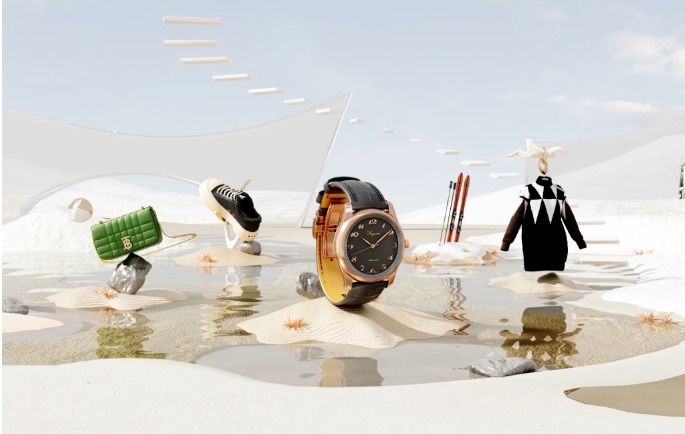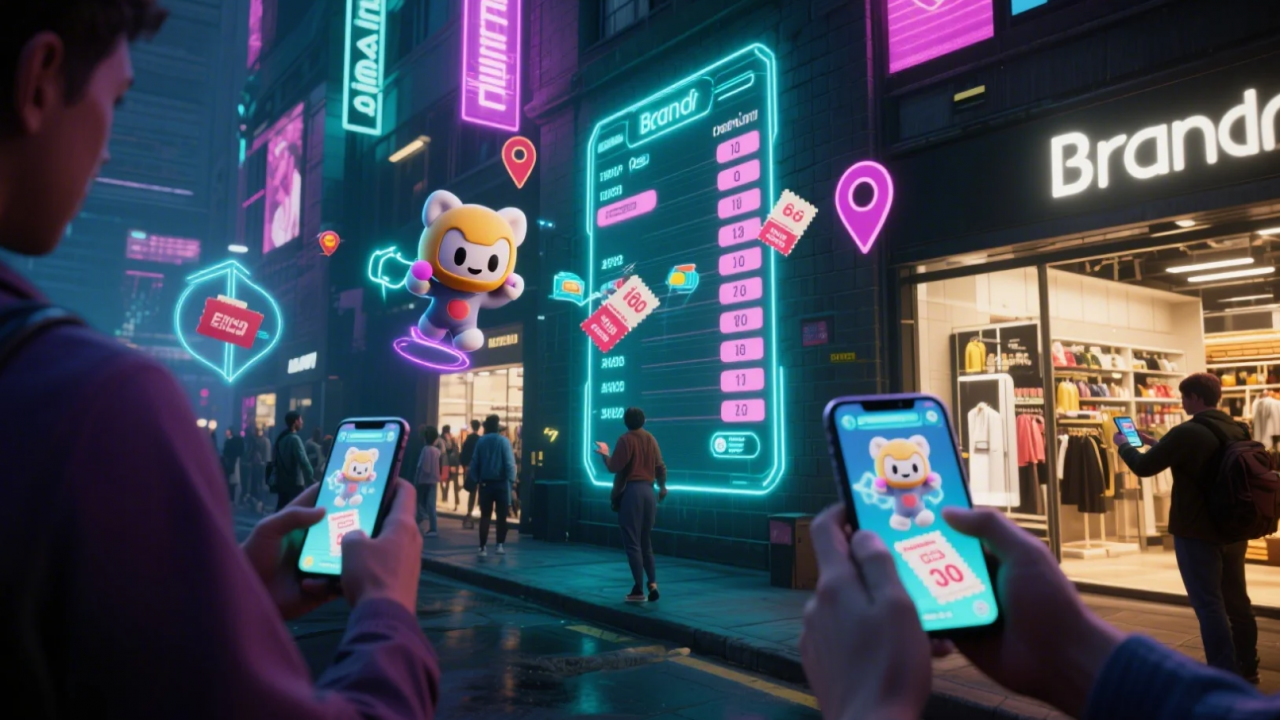Introduction
Augmented reality in showrooms has been taking over the shopping experience through an incredibly well-planned layout of the real world in the digital world. Not only has this helped customers save time on traveling through the ease of home shopping, but it has also given them an extensive range of selections without going to different showrooms. AR showrooms show everything from furniture displayed in your house to cars parked in your garage.
How do AR virtual showrooms enhance customer experience?
To elevate customer experience, brands quickly blend this immersive technology into luxury allure. Many brands have been witnessing an increase in virtual showrooms. Upon research, there was a whopping 44% sales increase. This means customer shopping is more inclined towards how convenient buying something is without physically visiting and trying it on.
Another reason many premium brands are showcasing apparel, furniture, fashion accessories, etc., through virtual showrooms is personalized recommendations. Without wasting time, production recognition in a cost-effective virtual showroom helps improve navigation toward physical store shopping.
Technology Behind AR Virtual Showrooms
Augmented reality is highly reliant on software and platforms for seamless user experience. For example, Apple’s ARKit, integrated with iOS software, anchors real-world objects with motion tracking and scene understanding. The ARCore introduced by Google powers Android devices and offers capabilities for achieving lifelike augmented elements.
LIDAR sensors facilitate augmented reality in virtual showrooms. These sensors cover depth mapping and accurate object placements. The iPhone Pro models have LIDAR technology and are compatible with the AR virtual showroom experience. Some brands are leveraging AR glasses and headsets like Apple Vision Pro. Integrating these advanced technologies aligns with modern customer tech-savvy expectations.
Top 6 applications of Virtual Showrooms
Fashion and apparel
The try-on experience in virtual showrooms provided by luxury brands intensifies the offering and competition with other premium brands. Interacting with the audience from the comfort of their homes and unleashing the try-on methods helps revolutionize the blending game of technology with real-time fashion and apparel.
For example, kivisense AR virtual try-on technology for fashion and apparel creates a seamless and user-friendly experience. Ideal for embedding AR functionalities with real-time tracking and e-commerce benefits, this no-code SaaS platform emphasizes the need for virtual showrooms.
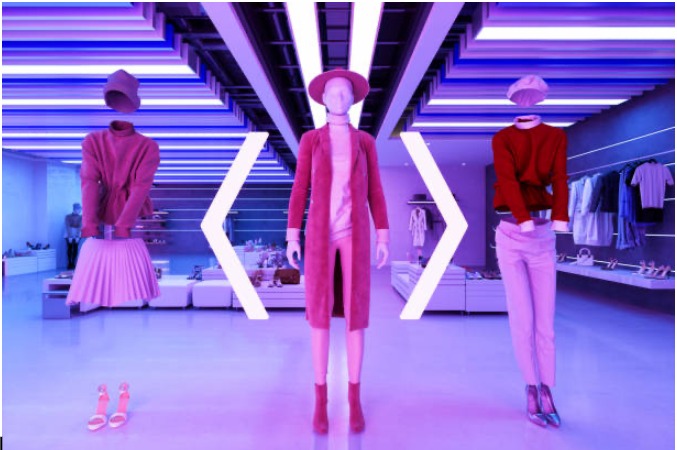
Source: Unsplash
Art and Museum
Enhancement in this category is increasing engagement rates to make art and cultural museum experiences more appealing to global audiences. This initiative offers digital tours and storytelling experiences in museums for the audience.
To provide a full experience, Chopard has stepped up the game for the customers. With timeless luxury showcasing firsthand experience, a 1:1 journey beautifully explains enduring creativity. The precise wrist-tracking algorithm introduced by this digital magic is becoming an advanced excellence.
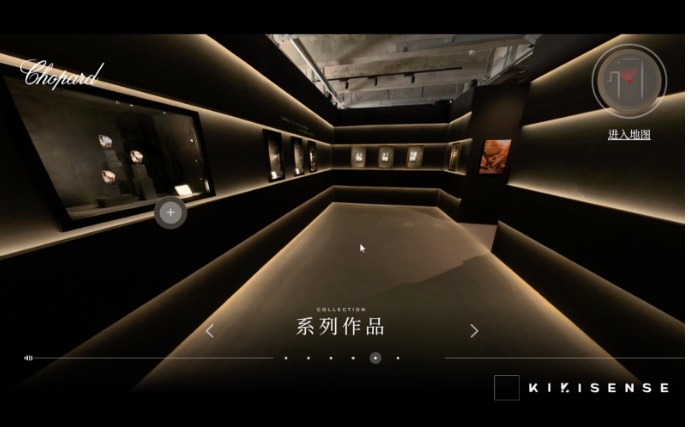
Source: Kivisense Youtube
Retail and e-commerce
Many brands are continuously evolving with the application of AR in retail and e-commerce. Like that, YSL Beauty is now introducing its beauty zone in pop-ups through virtual reality. The blend of technology and beauty offers an engaging and personalized way for customer interaction. The virtual storefront offers fragrances, skincare, and cosmetics in a boutique environment through this technological approach. The AI-driven tools are personalized to user analysis and help them make informed purchase decisions.
Event and exhibition spaces
For brand storytelling, brands instill augmentation into their event and exhibition spaces. This entity enhances the experience of product launches and trade shows for immersive environments, and virtual showrooms play a vital role.
For example, the Viktor&Rolf Flowerbomb Campaign with AR Try-on emphasizes versatility in enhancing the online shopping experience. This web-based virtual try-on helps users interact with the product without downloading any app. Users can try on sneakers, handbags, and watches with eyewear and create a whole new look to improve decision-making through 360 visualization.
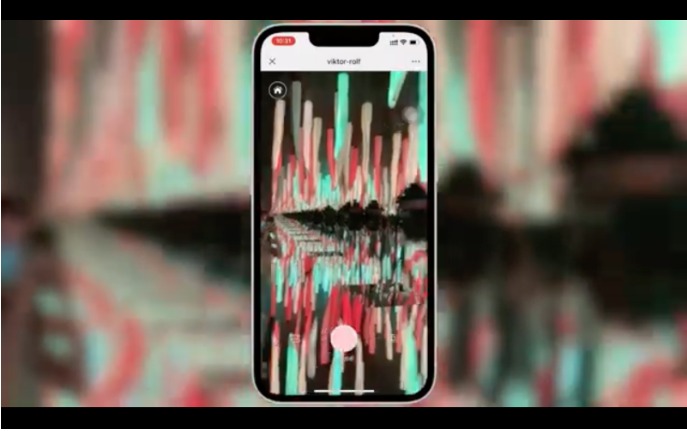
Source: Kivisense YouTube
Virtual car showrooms
Car enthusiasts want to experience driving cars without stopping at every retail car showroom, deciding which ones they want for a test drive, and then waiting for approval. AR has helped buyers move on from that, and Mercedes Benz’s new C-Class was launched with exploration in 3D. This experience brings forth a new revolution by pointing out every tiny detail in the car. Besides that, shoppers can preview the interior, select a color, and take a complete three-dimensional look at it from the touch of their screen.
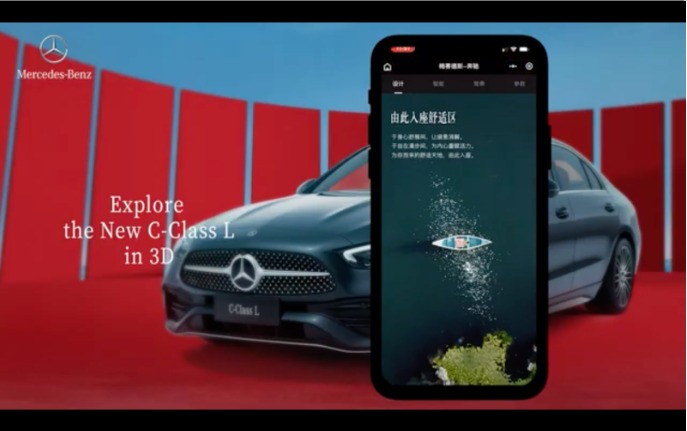
Source: Kivisense Youtube
Interior design visualization
Interior designing the home of your dreams is changing the idea of it all. The SLAM AR technology revolutionizes shoppers’ approach through a virtual experience. Renovate your house with AR furniture placement from the touch of the screen. Add or remove objects, place them in your room however you want, and make purchases immediately.

Benefits of AR Virtual Showrooms
Enhanced customer engagement
When customers approach through an AR virtual showroom, the idea of shopping changes their mindset. Now, the buyer can focus more on styling than spending time on traveling. This increases engagement rates by 94%, according to Shopify.
Interactive experiences
When customers get accurate immersion in real-time with digital overlaying, 70% of shoppers, including Gen Z and Millennials, purchase products. This exploration led to advancements from headsets and VR to touch screens, making customers 65% more likely to buy products.
Real-time product visualization
When customers preview the product visualization through virtual showrooms, it better represents products. This entity helps reduce hesitation and yield fewer returns.
Reduced physical space requirements
Now,, premium brands can stop worrying about physical space requirements. There is no longer a need to display inventory, as AR virtual showrooms help digitally showcase a broader range of products.
Lower operational costs
When brands work on growth, operational costs are the biggest rundown. Sample production and physical storefronts need to be eliminated. AR virtual showrooms reduce this overhead by 30%.
Accessibility and 24/7 availability
When the platform is accessible, operations are conducted around the clock. This initiates a spark in revenue, and customers’ convenience builds trust in the brand. AR virtual showrooms offer sales opportunities and have upped the game through 24/7 availability.
Global reach
No more geographical barriers like time, location, and other issues. When a customer wants to reach the brand and get this facility from the ease of their homes, AR virtual showrooms come into play.
Real-life use cases of AR virtual showrooms
Canada Goose
Easily move around the phone to get a virtual store preview and check out the latest winter clothing. Canada Goose has announced a virtual showroom for all premium brand shoppers. Now, customers can try jackets and other clothing by signing up on the app. With this cutting-edge retail initiative, users can get enhanced accessibility in a tech-savvy format. This engagement-driven marketing makes shopping memorable and encourages user interaction through social sharing.
Vogue’s Virtual Showroom
Now, shopping enthusiasts can try all kinds of bags, eyewear, and fashion apparel through the Tmall luxury app. VOGUE and Tmall Luxury launched a groundbreaking collaboration. This technological approach of AR virtual showrooms mixed with fashion increased competition in premium brands.the seamless integration of e-commerce with luxury and access. This sustainable innovation is now reducing the environmental impact of physical retail spaces.
Future trends in Virtual showrooms: What to expect?
The integration of AR-driven virtual showrooms is tailored to customers’ preferences. This features personalized product recommendations, styling advice, and predictive analytics. Customers can make purchases based on body measurements and perfect fit suggestions. Besides that, AR virtual showrooms are now being introduced into the metaverse. The virtual flagship stores will help in sustainable shopping practices like reducing waste and excess stock.
Conclusion
Blending the boundaries between physical and digital commerce through AR virtual showrooms is helping enhance operational efficiency and costs. Not only has this improved insights into customer demands, but it has also saved from rapid returns and less accessibility. Kivisense is one of the top businesses in China that has helped businesses reach customers through fashion and furniture try-ons. Not only has this increased the rate of customer collaboration, but it has also increased interactions for making more purchases. Contact us now!

